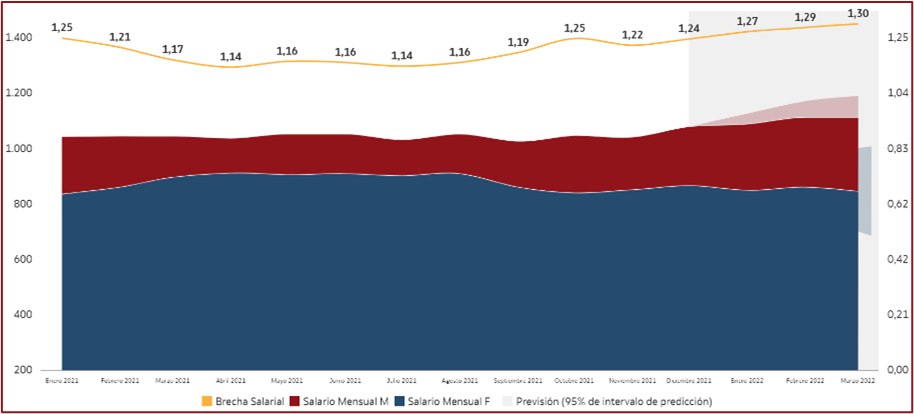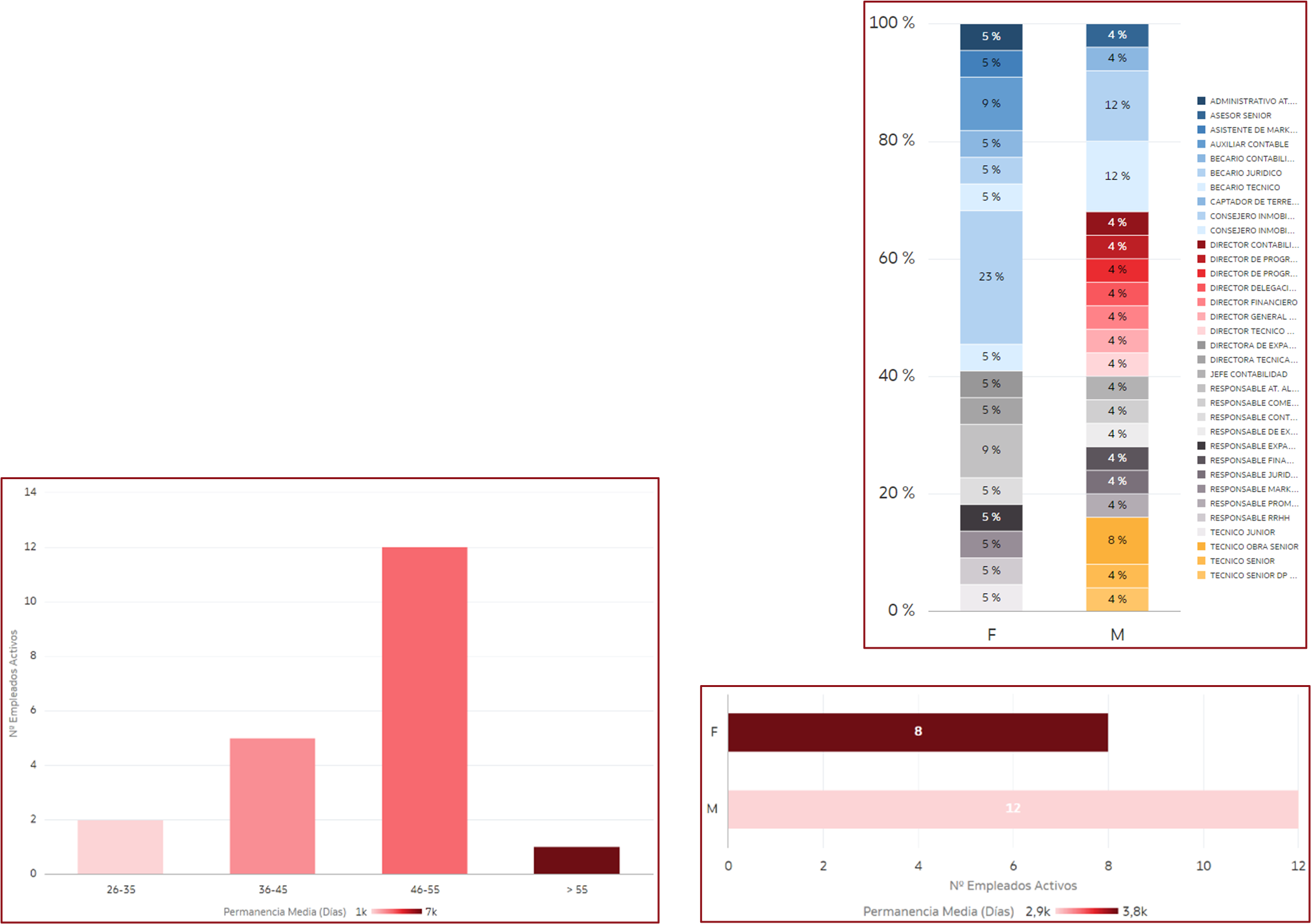People Analytics
A Human Resources Dashboard, A Dashboard of EqualityPeople Analytics is a project settled by Fundación Juan XXIII together with Quistor. Fundación Juan XXIII is an organization that works for over 5 decades with people with disabilities, that believes in diversity and inclusion, as Quistor does. Among the facilities offered in the portfolio of Fundación, we can find services such as the Digital Data Center that offers solutions on data management and digitalization of documentation.
When looking specifically into the Human Resources field, the use of HR software and other tools is common nowadays, but only 22% of the companies work deeply in Human Capital Management Analytics. Only 16% of the corporations have an HR Analytics manager on board. There is a huge opportunity out there, and Quistor, as a visionary, has to seize it.
In this context, Fundación and Quistor decided to join forces to offer a comprehensive solution that covers the entire process of HR data, from data gathering to the final analytical reports.
The team in charge of developing, in the first phase, a simple, valuable, and stunning HR dashboard, capable of engaging new customers with just seven HR KPIs, is formed by Iñaki Aguirregaviria, as manager of the project, Alejandra Gilabert (under the supervision of Begoña Villamor), Noemí Pérez as account manager, and María Serna and María José Ternero who deal with marketing tasks.
These seven indicators were selected out of sixteen proposed in a survey released to HR managers. Over 30 leaders agreed that the measure and analysis of equality, diversity, and inclusion would contribute to the success of the business.
“My first project and something so interesting and relevant in my hands. If the truly important KPIs for most companies are based on equal opportunities, parity, and plurality, maybe the World is really committed to change” were my first thoughts.
And then, the reality:
We had the chance to analyse data from a real, operating company, not very big, but enough to be representative of a common organization in Spain. 73 registered employees populate the datasets, with information about their gender, age, salary, days of absenteeism, % of disability (if any), job title, and type of contract, among others.
The indicators were Salary Gap, Distribution Rate (inter-sex ratio), Concentration Rate (intra-sex ratio), % Absenteeism, Functional Diversity Rate (workers with disabilities), Voluntary Rotation (attrition), and Talent Retention.
The analysis of employee retribution shows a Salary Gap of 23%, calculated as men’s monthly incomes divided by women’s. The forecasting for the first quarter of 2022 indicates an increasing difference in salaries, raising a 1,30 Salary Gap in March 2022.


Another revealing result is the Concentration Rate, which measures the distribution of men or women within the company. This KPI answers questions such as “Do men hold the senior management roles, the top positions?” or “Is there the renown, glass ceiling in the organization?”
And we found that the female workforce is concentrated mainly on commercial jobs, while the positions of technicians and directors of different areas are occupied principally by men.
Employee tenure or Talent Retention was identified as a relevant indicator since the personnel that develops critical tasks requires time inversion and economical efforts. In the studied company, 20 key job positions out of the 21 available are currently occupied; the essential roles are held primarily by 46-55 years old employees, and the intensity of colour demonstrates that the workforce acquires seniority within the organization. Besides, two key workers belong to the age segment of 26-35, pointing to a company that relies on young and less experienced people (on the other side, a second reading reveals that elder and more experienced people are not among new contracts). But once again, the male staff is greater in these essential positions, although the female representation remains longer periods of time in their jobs.
In summary, numbers have spoken to say that the investigated business represents the “normal” situation in Spain, where men earn over 20% more than women, where the glass ceiling seems to be a fact, and where candidates over 45 face enormous difficulties to be (re)hired, regardless their experience. In terms of equality, the job is still undone, but we are getting closer (opinion).
For me, it is a delight to work on this challenging project. The next step is presenting the pilot in a webinar to these CHROs, HR managers, HCM directors. The dashboard is reproducible, so they might be willing to analyse their own data and to find out the current situation of their companies. Our aim is to present a pilot capable of convincing HR managers of the need for People Analytics in their business. Will we succeed? Place your bets!


